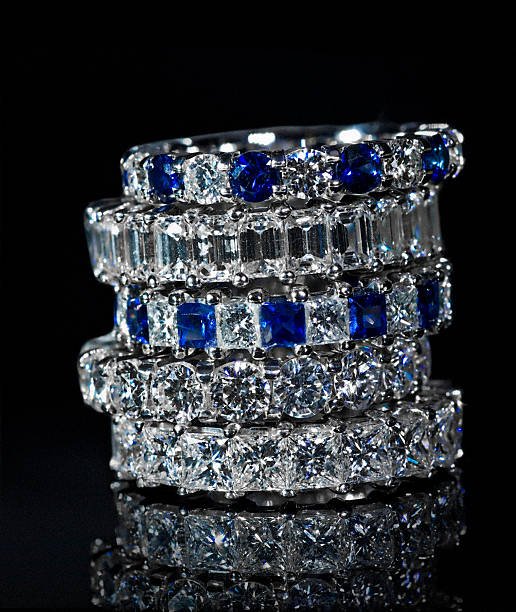The Legend of the New Delhi Purple Sapphire All Entries

One of the world’s most notorious--and incorrectly named stones-- is the New Delhi Purple Sapphire. The stone, which is actually an amethyst, has become well-known thanks to tales of a curse that followed it around during the 19th century. The stone, which is cut into a faceted oval, is mounted in a silver ring with two hinged pendants on each side. One side features a silver T that is engraved, and the other has two scarabs carved out of amethystine quartz.
Origins of the Stone
The first mention of the cursed amethyst was during the Indian Mutiny of 1857. Reports indicate that the stone was looted from the Temple of Indra, a place of worship for the Hindu god of weather and war. According to legend, the theft caused a curse to attach itself to the ring.
The Curse Claims Its First Victim
The gem soon found its way into the hands of a cavalryman named Colonel W Ferris, who brought it with him to England. Not long after his arrival, Ferris’ health began to decline and he lost nearly everything he owned. He passed the stone onto his son, who began to experience the same bad luck. The ring was gifted to the son’s friend who took his own life shortly after. The ring returned to Ferris’ son’s custody.
More Devastation and Destruction
Edward Heron-Allen, a man who had authored books on palmistry and translated Arabic literature, became the stone’s owner in 1890. He had reportedly begun experiencing multiple disasters that left him feeling shaken. He was unsure of the cause but gifted the ring to a singer friend who had suddenly lost her voice and could never sing again. He claimed to have passed the ring on to other friends who suffered similar misfortune.
In a letter discovered with the cursed ring, Heron-Allen revealed that he had attempted to dispose of the ring by tossing it into a canal, but just a couple months later it was found and returned to him. The whole ordeal had left him so shaken that he made the decision to lock the ring up in seven locked boxes and stored in his bank vault until three years after his death.
A New Home
His daughter followed his request and unlocked the ring from the vault in 1944 before donating it to a museum along with his letter. The cursed stone currently resides in the Natural History Museum in London. The ring’s story, which was retold by the NHM, was prefaced with the warning: “Whoever shall then open it, shall first read out this warning, and then do as he pleases with the jewel. My advice to him or her is to cast it into the sea.”
A Tall Tale
According to the NHM, most of Heron-Allen’s curse story seems to be entirely made up by the late writer. The mineral curators at the museum did some digging into his story and found that he had made up the legend to help boost interest in a short story he wrote in 1921. The story, The Purple Sapphire, had been written under the pseudonym Christopher Blayre and may explain why the amethyst was misidentified as a purple sapphire.
The experts at Ralph Mueller and Associates can help to make selling your jewelry easy. We have a lab on-site to perform appraisals and our GIA-certified gemologists are confidential buyers of all kinds of gold and diamond jewelry. We work with people from all across the United States to help them get the best value for their jewelry. Call us at 480.949.9299 to learn more.